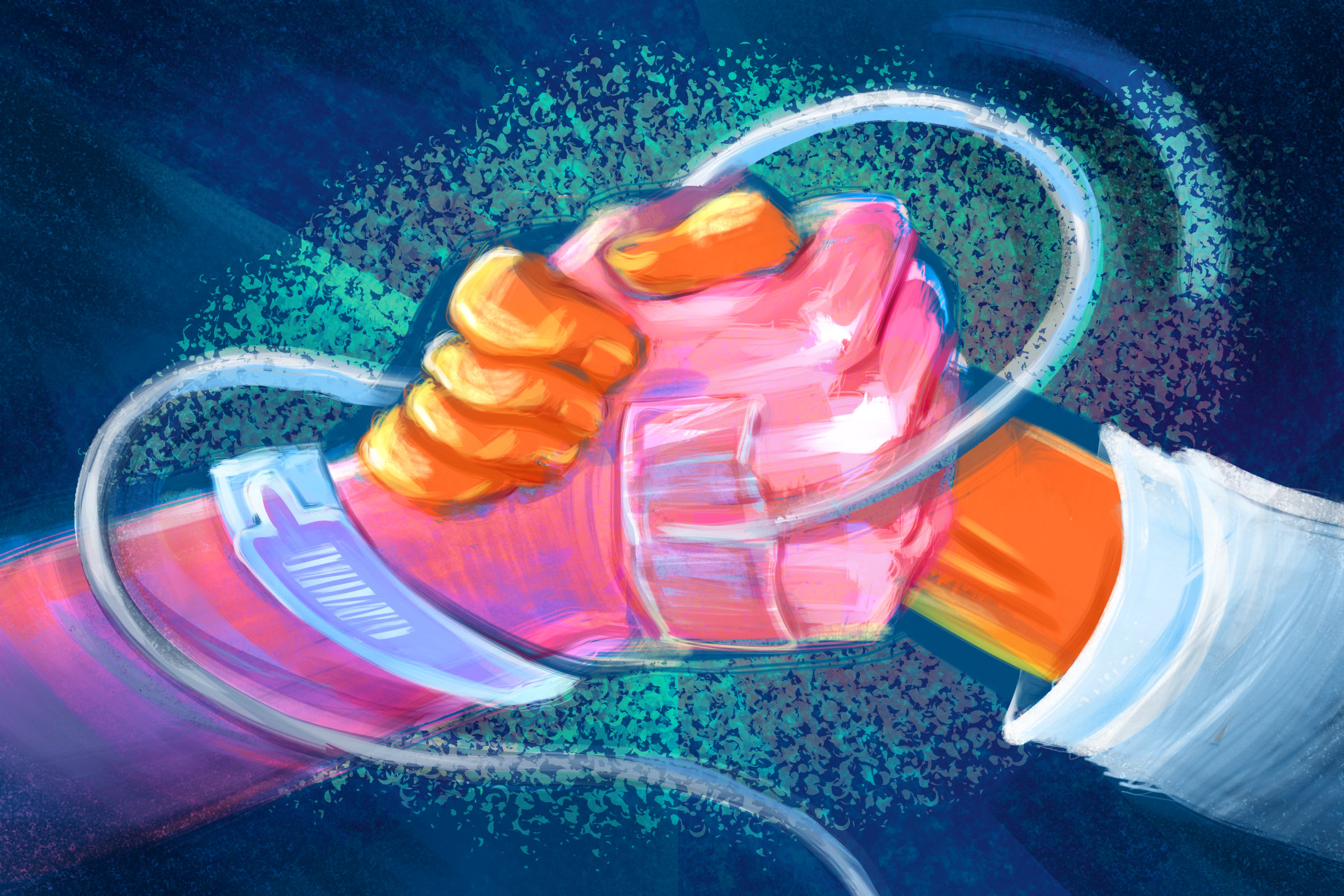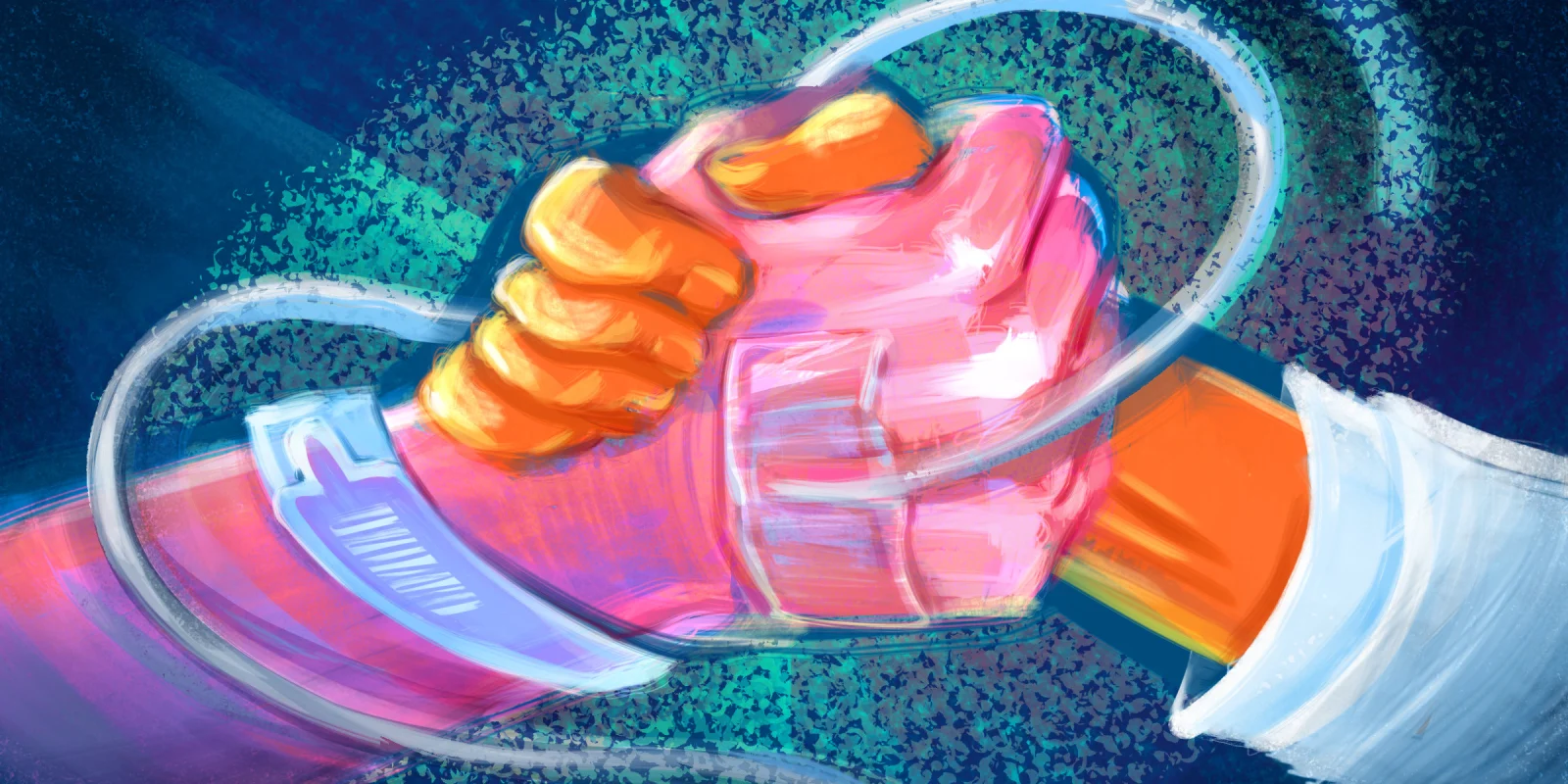
Three episodes tempered me — like heat does to form steel — into physician-hood. The first was when I felt (not just knew) that I could save a life. The second was being brought to tears by the silent suffering of a mean-spirited teen with cancer. The third was when I cried at my first death, 12-year-old Rosetta, a death I thought shouldn’t have happened when I was told that I had done everything right.
Dr. R., our pediatric cardiac surgeon, warned us that newborns can survive up to two traumas before dying — the first is being born; the second is surgery. There better not be a third on our watch. When baby Tina arrested at 3 a.m. the first night after surgery, I was four months into my internship. I tumbled out of the call room upper bunk, sprinted to the NICU, and started the resuscitation. Only after the baby revived did I look up — my chief resident had just arrived. I brought the baby back to life alone.
The NICU’s electric sliding doors whooshed open and Dr. R. appeared that wintery night in his Brooks Brothers grey coat over his blue-striped pajamas, and galoshes with open buckles clinking against each other. He stood there, asked if there was anything he could do, and with a nod of approval, swiveled about and went home.
I knew then, I could save a life.
I was assigned to pediatric oncology as an early rotation because I had attended school here and knew where all the labs and instruments were. Stillman was 14 years old, yet bald from chemotherapy. But the stigmata of his lifelong neurofibromatosis lumps were more evident. There was one in his liver that had transformed into fibrosarcoma. Stillman was mean, acid-tongued, and spitting venom at everyone — nurses and doctors alike. For interns, he had even less patience.
I made midnight “poison” rounds — kids and parents monikered me “Dr. Sandman” — starting IVs on the kids in the oncology ward. That night, Stillman’s IV was actinomycin D, which I knew burned as it coursed through the vein. He already had the mouth ulcers and hair loss it induced. With Stillman awake and his bed adjusted to sitting, he greeted me, hissing like an asp, as Dr. Shitberg. Internally, I realized I looked forward to running his actinomycin. I unraveled the IV and watched to make sure there was no extravasation.
One tear coursed down his right cheek as he looked stoically at the opposite wall. I stepped outside his door, leaned against the wall, and wept. I wept for him, for how I wanted him hurt, for my guilt, for feeling so “unphysicianly.” Primum non noceter, do no harm, I recalled inscribed around the rotunda of our autopsy suite.
But for Rosetta, I wept and I wept angrily.
She should not have died. Rosetta was wheeled — her gurney banging through the flapping doors — into the ER, stuporous. Her skin lesions were straight out of my dermatology text — petechiae and purpora that would not blanch. With her stuporous state and nuchal rigidity, I called the meningococcaemia before we rolled her to the elevator for admission.
For the next three days, I stayed with her, even when I was not on call. My chief resident guided me; my attendings (rarely present after morning walk rounds) stopped by in the evening. Arm around my shoulders, Dr. V., our infectious disease specialist, reassured me on my treatment course — enough antibiotic to treat the sepsis, but not so much that a bolus could induce the overly massive bacterial destruction that could cascade into disseminated intravascular coagulation. He said I was doing right.
But she bled into herself within the first day. Then, we balanced the platelets and heparin, but still she became obtunded. Purpura transformed into the blotches of death, her body swelled, her conjunctiva injected, and began spilling out of her eyes. This pretty girl was transformed into an ogre of near death. I resuscitated her twice. The third night, before midnight, she died. I, wrung out, could not stop the resuscitation until my resident said, “Enough. She’s been through enough.”
I walked out of her room dazed. Then the tears and the anger toward myself came. I did everything right; diagnosed her as she burst into the ER, started the antibiotics, then the platelets and heparin, and revived her twice. She was not supposed to die!
My resident said, “You’ve been her doc. Now go tell the parents in the waiting room that she died.” I can only recall walking emptied to the waiting room, seeing the parents who already seemed to know, but not remembering what I said. What can one say to parents whose child shouldn’t have died?
After I graduated from medical school, I asked one of my college teachers, a professor of aesthetics, why he had recommended that I become a physician. “A true physician learns humility,” he said. In the face of death, humble I became. I knew how to save lives and how with all one’s knowledge, a child may still die.
Nathan Szajnberg, MD attended the University of Chicago College and Medical School. He completed a year of pediatrics, then general psychiatry, child/adolescent psychiatry residencies, and psychoanalytic training. He was the Freud professor of psychoanalysis at the Hebrew University, and is now in private practice in Palo Alto. His two most recent books are "Jacob and Joseph, Judaism's Architects" and his second novella, "Breathless."
All names and identifying information have been modified to protect patient privacy.
Illustration by April Brust







